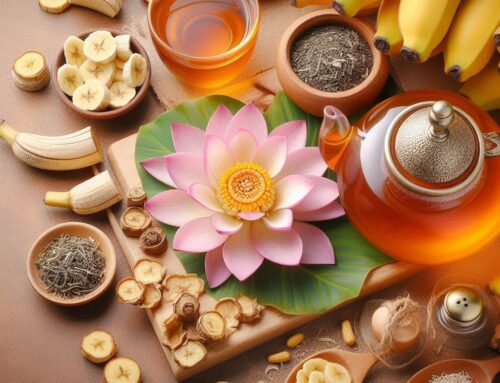
Dragon fruit, also known as pitaya, is a tropical fruit that has gained immense popularity in recent years due to its unique appearance and delicious taste. However, for dragon fruit plants to bear fruit, proper pollination is essential. In this comprehensive guide, we will delve into the art of pollinating dragon fruit, exploring the importance of pollination, understanding the reproductive cycle, and learning various techniques for successful pollination.
The importance of pollination for dragon fruit plants
Pollination plays a crucial role in the life cycle of dragon fruit plants. It is the process by which pollen from the male parts of the flower is transferred to the female parts, leading to fertilization and the development of fruits. Without pollination, dragon fruit plants would not be able to reproduce and produce the vibrant, succulent fruits that we all enjoy.
Pollination is not only vital for fruit production but also for maintaining genetic diversity in dragon fruit plants. When dragon fruit flowers are pollinated, they receive genetic material from different plants, resulting in offspring with a wide range of traits. This genetic diversity enhances the overall health and resilience of the dragon fruit population, making them more resistant to diseases and environmental changes.
Understanding the reproductive cycle of dragon fruit
Before diving into the pollination techniques, it is essential to understand the reproductive cycle of dragon fruit. Dragon fruit plants are night-blooming cacti, meaning their flowers open up at night to attract nocturnal pollinators such as bats and moths. The flowers typically last for one night only, and if they are not pollinated during this time, they will wither and fall off.
Once pollination occurs, the flowers transform into fruits, which take around 30 to 50 days to fully ripen. The dragon fruit plant then goes through a period of rest before producing another batch of flowers. Understanding this cycle is crucial for timing your pollination efforts and ensuring a consistent supply of dragon fruits throughout the year.
Natural pollination methods for dragon fruit
Dragon fruit plants have evolved to rely on natural pollinators for reproduction. Bats and moths are the primary pollinators for dragon fruit, attracted by the sweet fragrance and nectar of the flowers. If you have a garden or orchard with a healthy population of these nocturnal creatures, they will likely take care of the pollination for you.
To encourage natural pollination, create a pollinator-friendly environment by planting flowers that attract bats and moths, such as night-blooming jasmine and moonflowers. Additionally, avoid using pesticides that may harm or deter these beneficial pollinators.
Hand pollination techniques for dragon fruit
If natural pollination is not sufficient or if you are growing dragon fruit in an area without sufficient bat or moth activity, hand pollination can be a viable alternative. Hand pollination involves manually transferring pollen from the stamen (the male reproductive organ) to the stigma (the female reproductive organ) of the flower.
To hand-pollinate dragon fruit, start by identifying the flowers that are ready for pollination. These are typically the ones that have just opened up and have a fresh, vibrant appearance. Gently collect pollen from the stamen using a small brush or cotton swab, making sure to avoid damaging the delicate flower parts. Then, transfer the collected pollen to the stigma of another flower, gently rubbing it in circular motions to ensure proper fertilization.
Tools and equipment for pollinating dragon fruit
When it comes to hand pollination, having the right tools and equipment can greatly enhance your success rate. Here are some essential items you will need:
- Small brush or cotton swab: This will be used to collect and transfer pollen.
- Magnifying glass: A magnifying glass can help you identify the readiness of flowers and observe the intricate parts for precise pollination.
- Tweezers: Tweezers can be handy for delicate handling of flowers and pollen.
- Pollination bags: These small, breathable bags can be used to cover flowers after hand pollination to prevent cross-pollination and ensure successful fertilization.
Having these tools readily available will make the pollination process more efficient and increase the chances of successful fruit set.
Best practices for successful dragon fruit pollination
To achieve successful pollination and maximize fruit production, it is essential to follow some best practices. Here are a few tips to keep in mind:
- Timing is key: Dragon fruit flowers are most receptive to pollination during the first few hours of opening. Be sure to monitor your plants closely and perform hand pollination during this window of opportunity.
- Be gentle: When performing hand pollination, handle the flowers with care to avoid damaging them. Use gentle, circular motions to transfer pollen, ensuring it reaches the stigma without causing harm.
- Maintain cleanliness: Pollen can easily become contaminated, leading to unsuccessful pollination. Keep your tools and equipment clean to prevent cross-contamination and ensure the purity of the pollen being transferred.
- Practice patience: Dragon fruit plants take time to produce fruits after pollination. Be patient and allow the fruits to develop fully before harvesting them. Premature harvesting can result in underdeveloped and tasteless fruits.
By following these best practices, you can increase the likelihood of successful pollination and enjoy a bountiful harvest of dragon fruits.
Common pollination problems and how to troubleshoot them
Despite your best efforts, you may encounter some challenges during the pollination process. Here are a few common problems and their potential solutions:
- Lack of pollinators: If you notice a lack of natural pollinators in your area, consider attracting them by planting flowers that are known to attract bats and moths. Alternatively, you can hand-pollinate the flowers using the techniques mentioned earlier.
- Poor flower production: If your dragon fruit plants are not producing enough flowers, it may be due to inadequate sunlight, improper nutrition, or incorrect pruning techniques. Address these issues to encourage more flower growth and increase the chances of successful pollination.
- Low fruit set: If your flowers are not developing into fruits, it could be due to insufficient pollination. Increase your hand-pollination efforts, ensuring that each flower receives an adequate amount of pollen for successful fertilization.
By identifying and addressing these pollination problems, you can overcome obstacles and ensure a fruitful dragon fruit harvest.
Harvesting and caring for pollinated dragon fruit
Once your dragon fruit plants have been successfully pollinated and the fruits have developed, it is time to harvest and care for them. Harvesting dragon fruits should be done when they are fully ripe, as they do not continue to ripen after being picked. Look for fruits that have vibrant colors and a slight give when gently squeezed.
After harvesting, it is important to handle the fruits with care to avoid bruising or damage. Dragon fruits should be stored in a cool, dry place away from direct sunlight. They can be consumed fresh or used in a variety of culinary preparations, such as smoothies, salads, and desserts.
To ensure the continued health and productivity of your dragon fruit plants, provide them with proper care and maintenance. This includes regular watering, fertilization, and protection from extreme temperatures or pests. By nurturing your plants, you can enjoy a consistent supply of pollinated dragon fruits for years to come.
Conclusion and final tips for successfully pollinating dragon fruit
Mastering the art of pollinating dragon fruit is a rewarding endeavor that allows you to enjoy the abundant fruits of your labor. Whether you rely on natural pollinators or choose to hand-pollinate, understanding the reproductive cycle, using the right techniques, and following best practices are key to successful pollination.
Remember to be patient, as dragon fruit plants take time to bear fruits after pollination. Troubleshoot any pollination problems you may encounter, and provide proper care for your plants to ensure their long-term health and productivity.
So, go ahead and embark on your dragon fruit pollination journey. With the knowledge and skills gained from this comprehensive guide, you are well-equipped to become a master of pollinating dragon fruit and enjoy the sweet rewards of your efforts. Happy pollinating!
CTA: If you found this guide helpful, be sure to share it with fellow dragon fruit enthusiasts and aspiring pollinators. Together, we can spread the joy of growing and pollinating dragon fruit!






